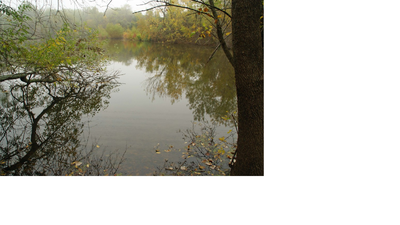JJDZ Soil: Difference between revisions
Jljordan77 (talk | contribs) |
Jljordan77 (talk | contribs) |
||
| Line 25: | Line 25: | ||
**Temperature was 71 degrees F | **Temperature was 71 degrees F | ||
*Soil sample was retrieved at a depth of roughly 6-8 inches | *Soil sample was retrieved at a depth of roughly 3 inches and about 6-8 inches from creek bed. | ||
*Description of Area: | *Description of Area: | ||
Revision as of 03:54, 6 December 2017
Classification
- Domain: Bacteria
- Phylum: Proteobacteria
- Class: Gammaproteobacteria
- Order: Enterobacterales
- Family: Enterobacteriaceae
Species
- Escherichia coli
- NCBI Link: Escherichia coli Taxonomy: [1]
Habitat Information
- Soil Collection Date & time: 9/7/2017 @ 10:00 AM
- Conditions Present at time of soil collection:
- no recent rain
- Temperature was 71 degrees F
- Soil sample was retrieved at a depth of roughly 3 inches and about 6-8 inches from creek bed.
- Description of Area:
- Pond and creek area
- Moderate erosion
- Wildlife present (actually saw a coyote when collecting sample)
- Area was damp and wet (close to creek bed)
- Area gets roughly 1/2 day of sunlight everyday
Description and Significance
- Colonial Appearance:
- Shape: Circular
- Margin: Entire
- Elevation: Raised
- Size: Punctiform, small
- Texture: Smooth
- Appearance: Shiny
- Pigmentation: Non-pigmented / colorless
- Optical Property: Translucent
Describe the appearance (colonial and cellular), possible antimicrobial activity etc. of the organism, and why the organism might be significant.
Genome Structure
- E. coli has only one circular chromosome
Describe the size and content of the genome. How many chromosomes? Circular or linear? Other interesting features? What is known about its sequence? Include S Ribosomal sequence that you obtained from PCR and sequencing here.
Cell Structure, Metabolism and Life Cycle
Interesting features of cell structure; how it gains energy; what important molecules it produces.
Physiology and Pathogenesis
Biochemical characteristics, enzymes made, other characteristics that may be used to identify the organism; contributions to environment (if any).
If relevant, how does this organism cause disease? Human, animal, plant hosts? Virulence factors, as well as patient symptoms.
References
Author
Page authored by Jennifer Jordan and Denise Zamarrippa, student of Prof. Kristine Hollingsworth at Austin Community College.

